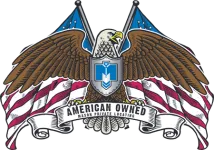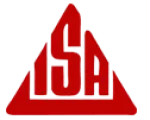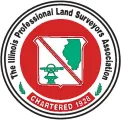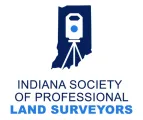One of the most terrifying thoughts for freedom-loving Americans is that of a homeland attack. The idea of strangers infiltrating our soil and imposing danger on our families and our way of life makes us feel vulnerable. It creates an immediate sense of awareness, protectiveness and Patriotism.
But what if I told you that the "Damage Prevention World" has already been infiltrated - and that the risks to our families and communities are already there?
Silent explosives are buried beneath the surface,
and we unknowingly send excavators into minefields every day. Those minefields
are our neighborhoods. It's the schools, shopping centers, churches, hospitals
and offices where we extra employee security measures to keep us safe. What we
don't expect is an infiltration from below… from a silent enemy that we created.
The 1980s were a time of peace and progress for Americans.
Not actively engaged in any major military conflicts, the decade was marked by
significant economic growth and various thriving industry sectors. Deregulation
of financial markets, increased mergers and acquisitions, and the introduction of
junk bonds and derivatives fueled expansion for financial services. Low-interest
rates, favorable tax policies and increased demand for commercial and residential
properties created a surge in real estate and construction industries. But our
most impactful advancements were the technologies that changed the way we work -
many of which are still in use or became the steppingstones to even more
advanced technologies we use today.
Horizontal Directional Drilling (HDD) is one of those
technologies. HDD is a trenchless technology in which a small hole is drilled
horizontally underground and then can be enlarged to the desired size along a
desired path. The technique was initially developed as a method for installing
utility lines, particularly for cross-boring obstacles like rivers, highways
and environmentally sensitive areas, without the need for open-cut trenching.
Offering greater efficiency and less disruption than traditional excavation
methods, HDD gained popularity through the 1990s and became and industry
best-practice for subsurface utility installation by the 2000s. But not all
that glitters is gold.
Other utility advancements followed a similar timeline. Economic
growth drove residential and commercial developments, a rise in personal
computers and the introduction of the internet, cable and other
telecommunications were just the beginning of the massive changes afoot for underground
infrastructure. Less sexy and often overlooked by non-utility professionals is
the simultaneous introduction of high-density polyethylene (HDPE) as the
preferred material for gas distribution lines.
HDPE is a versatile thermoplastic polymer made from
petroleum. It is characterized by its high strength-to-density ratio, meaning
that it is strong and durable while also being relatively lightweight. Unlike
its cast iron and carbon steel counterparts, it offers greater flexibility and
resistance to environmental inhibitors like ultraviolet radiation (UV) and
moisture. However, because of its non-metallic nature, it cannot be detected
with traditional electromagnetic utility locating methods.
Horizontal directional drilling is often used in congested
areas and can range up to several thousand feet in distance. Private utilities,
not marked by 811/One Call, can get caught in the crossfire. HDD can blindly
and unknowingly bore through these (and other) existing utilities creating a
situation known as a "cross-bore." The most prevalent (and dangerous) cross-bores
occur when gas lines intersect residential and commercial sewer lines. Sewer
damages are scary because they are often unknown and unreported until the
damages cause significantly bigger issues. Even scarier is knowing the potential
risks they pose to our communities, but not having a true consensus of the volume
of existing cross-bores in the U.S.
According to Cross Bore Safety Association (CBSA), there
have been "as many as 430 cross-bores found nearly 200 miles." Their research
indicates an average of approximately 0.4 cross-bores per mile of mainline in
the U.S.
Cross-bores pose a wide-range of safety hazards and negative
health and environmental impacts to our communities, as well as disruption of
essential services:
System Disruptions and Malfunctions: Cross-bored utilities
can wreak havoc on the functionality of both the gas and sewer systems. Gas
pressure may decrease, leading to service disruptions for residential and
commercial areas. Sewage flow can be obstructed, leading to backups,
contamination, and health hazards for the community.
Toxic Exposure: When gas lines cross through sewer lines, the
risk of exposure to toxic gases doubles. Sewer gas is a mixture of various
gases including methane, hydrogen sulfide, ammonia and carbon monoxide. Natural
and sewer gases can enter homes through drains, toilets, sinks or other
plumbing fixtures that are connected to the sewer system and are hazardous to
human (and pet!) health when inhaled in high concentrations. They can cause symptoms
like headaches, nausea, dizziness, respiratory issues, loss of consciousness
and even death.
Gas Leaks and Explosions: Sewer and natural gases are highly
flammable. The same way sewer and natural gases infiltrate homes and pose toxicity
to humans, they can fill confined spaces over time. Cutting tools sent blindly
through sewer lines to clear unknown obstructions can result in complete catastrophe.
Even something as simple as a pilot light on stove, water heater or furnace can
ignite the gases devastate entire neighborhoods.
With more than 1.5 MILLION MILES of public and private sewer
infrastructure in the U.S., that's approximately 600,000 potential cross-bores -
and an 80% chance that one exists within 2 miles of your home and office. But
that leads to a much bigger question: what can you do about it, now?? Prevention
is key moving forward.
- NEVER blindly send cutting tools through sewer lines. Robotic Camera services provide real-time visual confirmation of obstructions, allowing you to make safe, educated decisions to restore the facility.
- Locate and map sewer lines where you are performing HDD to install gas lines with Robotic Camera services. Not only does this ensure line location with GPS-accuracy, it can provide approximate depth of the lines and high-definition video evidence of the existing condition of the lines prior to drilling.
- Establish strong communication between utility companies, contractors and public and private utility locators prior to horizontal directional drilling or excavating. Sharing information and coordinating efforts will help to potentially identify potential cross-bore risks and mitigate occurrences.
The dangers of cross-bores are real - and they are
serious. As damage prevention professionals, ignoring the potential risks of
cross-boring utilities is contradictory to the very foundation of our industry and
counterproductive to every measure that has been put in place over the past 30
years to better protect and serve our communities. By adopting advanced
practices such as GPR, robotic sewer camera services, and utility mapping, we
can mitigate risks, protect our communities, and ensure a safer, more
resilient underground infrastructure.
Mason Private Locating has centuries of experience
advocating for comprehensive damage prevention. We want YOU to join us in our fight
against cross-bores. For more information about specialty utility services to
prevent damages related to existing cross-bores and/or protect infrastructure
from future cross-bore instances, give us a call. Our Customer Service
Representatives are passionate about educating our customers and partnering
with them in long-term solutions for the future of our infrastructure (888)316-3933.













